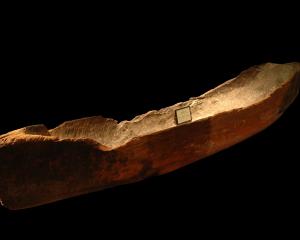One of China's oldest gardens has been the inspiration for the Dunedin Chinese Garden. Gillian Vine makes some comparisons.
It could be almost any construction site in Suzhou: workers in fawn overalls with the company name beavering away - but there are no women workers, the scaffolding is steel, not bamboo, and looking back, there's the Gresham Hotel.
Walking into Dunedin's Chinese Garden, it's pure Suzhou, an impression only to be expected because it is one of the southern Chinese city's finest gardens that was the inspiration for ours.
Suzhou, an hour by train from Shanghai, lies on China's Grand Canal, a 1000-year project begun in 486BC and stretching 1900km from Beijing to southeast of Hangzhou.
The city has some 70 historic gardens, the oldest of which dates back 1000 years, and a dozen are open to the public.
At 0.6ha, the Master of the Nets - originally laid out in the 12th century and updated more than 300 years ago - is one of the smallest.
Its size, as well as its beauty, were factors in choosing it as the model.
Landscape architect Bruce Young, of Auckland, who had lived in Hong Kong, did the original design, Dunedin Chinese Gardens Trust member Mick Field explained.
‘‘He chose the Master of the Nets as the one that emulated the size and so on of the Dunedin site,'' Mr Field said.
He acknowledged that the site was controversial but said that it was ‘‘important the garden was in the centre of the city for tourism'' and preferable to ‘‘banging away about [having] a chunk of the town belt''.
In terms of its use of water, rocks, plants and timber, the Master of the Nets is superb and it is understandable why Dunedin chose this model.
Clever juxtapositioning of buildings, rocks and plants - including such notable conifers as a Pinus bungeana and 350-year-old Podocarpus macrophyllus, maples, magnolias, jasmine, pomegranates, paeonies and camellias - sets the Suzhou scene.
In Dunedin, immense care has been taken to use plants seen in the Master of the Nets garden, with appropriate replacements where necessary, the Syringa vulgaris instead of Syringa oblata, and a Pinus mungo instead of P. bungeana, for instance.
Step over the wooden barrier that keeps out evil spirits and the Dunedin garden is pure China, subtle, quiet and peaceful, even though men are working.
The rocks were brought from China after South Island alternatives, from sites in Dunback and Nelson, were rejected, as they ‘‘did not meet the design parameters'', trust member Adrian Thien said.
‘‘The main focus is the pond and all the buildings are around that,'' he said.
Mr Field points out that the handmade dark grey roof tiles are a hallmark of Suzhou. ‘‘That grey and white [walls] enables the plants to be shown very nicely,'' he said.
Presented with a list of some 600 plants, he had some reservations.
‘‘My concern was, could we get the plants and would they do well here.
‘‘Some of the plants may be marginal but if they don't survive, we'll substitute something else.''
He described ‘‘as very marginal'' the banana and lotus (Nelumbo) but added that the ‘‘in and out'' practice of taking tender plants out in winter was common elsewhere and maintained a good look throughout the year.
Because the garden is walled, as is traditional in China, the site's climate was less of an issue, Mr Field said. Fears of the site being unsuitable for plants were not justified.
Getting the plants, especially as the Chinese strongly preferred planting larger specimens, was not always easy.
Blueskin Nurseries, charged with finding the plants, ‘‘had to go all over the country and get these things and grow them on'', Mr Field said.
In addition, Wallis's Nurseries is supplying more than $11,000 worth of plants, most of which will be used around the entrance to the garden.
For the gardener, the Dunedin Chinese Garden will have much that is familiar - the likes of Fatsia japonica, Hosta plantaginea, Wisteria, jasmine, Nandina, Magnolia grandiflora and Ginkgo bilboa - but the setting is a reminder that these plants are every bit as exotic as the garden in which they are set, a little corner of the Yangtze Basin faithfully translated into Otago.












